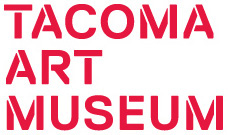Mark Tobey
Mark Tobey’s artistic interests were spiritual as well as formal. Inspired by the Baha’i faith and Zen Buddhism he created a unique visual vocabulary for expressing his conceptual framework. He studied at the Art Institute of Chicago from 1906 to 1908 then moved to New York where he worked as a fashion illustrator for McCall’s magazine. He had his first one-man show at M. Knoedler & Co., New York in 1917.
In 1922 Tobey moved to Seattle to teach at the progressive Cornish School of the Arts. He began traveling worldwide during this period a habit he continued lifelong. From 1931 to 1938 he taught at Dartington Hall in Devonshire, England returning to Seattle just before World War II. Here he became friends with Morris Graves (1910-2001), Kenneth Callahan (1905-1986), and Guy Anderson (1906-1998), a group that collectively became known as the Northwest Mystics for their shared aesthetics. Tobey became nationally and internationally successful with solo exhibitions in San Francisco, New York, Paris, and Switzerland, among others. In 1958 he became the first American since James Whistler to receive the first prize for painting at the Venice Biennale.
From his travels in Asia and the Middle East, Tobey became fascinated with calligraphy and Arabic script and created a style of painting he called “white writing.” These paintings, which include elements from the real world, are densely packed compositions in which details, rendered in white, swirl in and through ambiguous spaces.
























